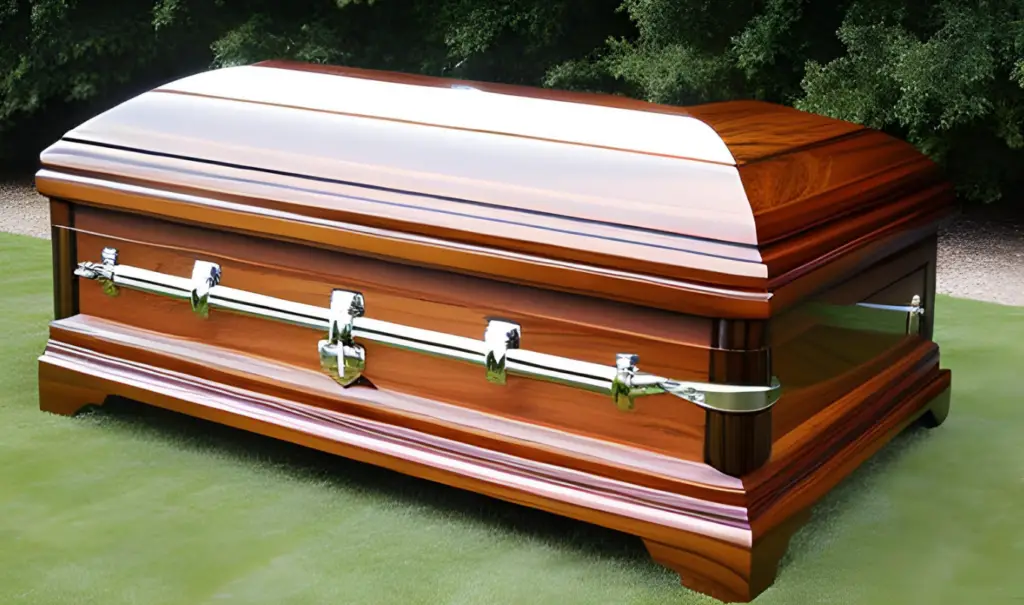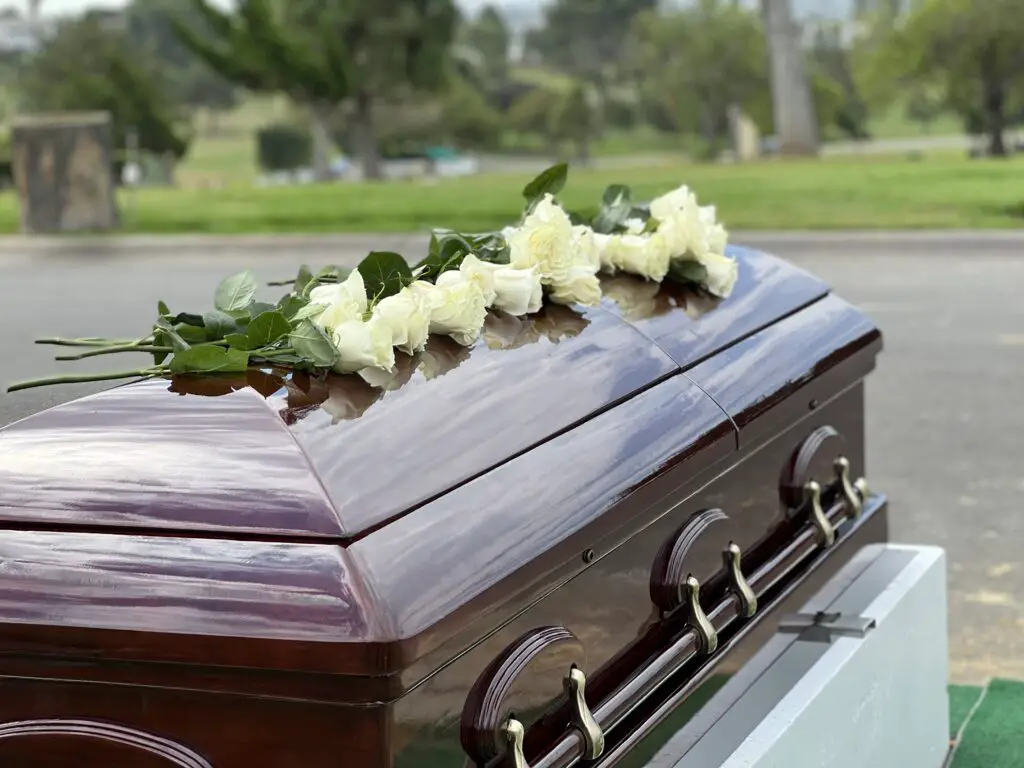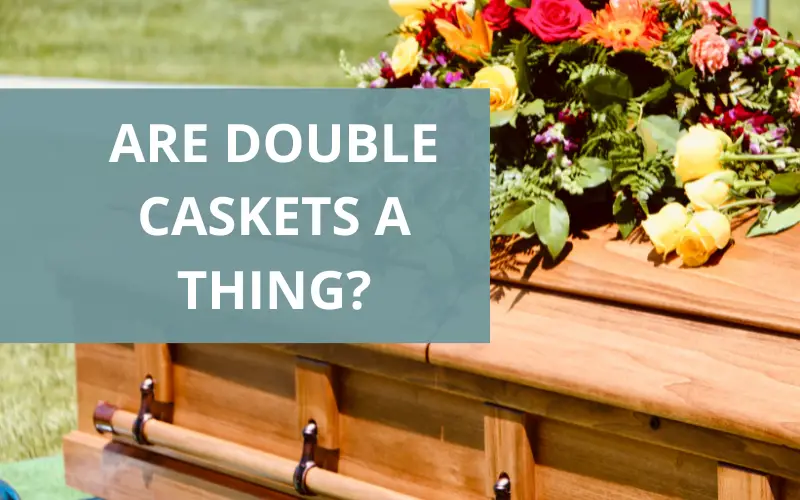- Most double caskets are custom orders and aren’t offered by funeral homes
- Double caskets historically symbolized the unity of couples in death
- They are not widely used given some practical limitations
In a world where burial traditions are evolving, the use of double caskets and burials is gaining interest. This article details all you need to know about double caskets and when it might be the best fit for your family. We’ll also explore alternative options to consider where a double casket isn’t a practical choice.
What Is A Double Casket?

A double casket, sometimes referred to as a tandem casket, is a wide burial container that accommodates two individuals in a single casket. They are rarely used as unique circumstances must be met to enable two deceased to be buried at once.
Given this, double caskets aren’t mainstream offerings and must be custom ordered for manufacture. This delay isn’t ideal as it can postpone funeral plans – however, a possible workaround is to use oversized caskets which are more broadly available (if each of the deceased are of a standard body size).
How much does a double casket cost?
A double casket is priced conservatively from $4,700 to $9,500 for a standard wood model. This is difficult to quantify as pricing varies greatly depending on materials, size and quality.
The average cost of a single person casket ranges from $2,300 to $5,000 so families need to consider if individual burial containers are better value.
When Are Double Caskets Used?
Although double caskets are uncommon, they are typically used in the following situations:
- Double caskets enable couples, family members, and close friends to be interred together, symbolizing their close bonds and commitment
- They are used when individuals pass away at the same time (e.g. usually in tragic circumstances)
- Mothers who pass along with their baby in childbirth are often placed in one casket. It is usually possible to use a single sized burial container but a double casket can be used for practical reasons
- Cultural and religious traditions can dictate the use of double caskets in some circumstances
Benefits to Getting a Double Casket

Where practical, choosing a double casket can carry meaningful advantages for grieving families.
Comfort for loved ones
Double caskets can provide emotional comfort to families. They ensure loved ones stay together, which can be especially reassuring for parents and small children who share strong bonds. For families who’ve seen lifelong commitments between parents or couples, separating them in death can be emotionally challenging. Double caskets ease this separation, offering solace to those who are grieving.
Cost savings
Using a double casket can be cheaper than buying two separate ones of the same quality and materials, enabling families to save an extra few thousand. There are also flow-on effects where savings are possible through holding one funeral service and using one burial plot (or a wider one) instead of two.
Environmental benefits
Opting for a double casket can be kinder to the environment. Compared to two separate burials, it reduces the ecological footprint by conserving land, using a single mode of transport (versus two hearses), and consuming fewer overall resources in the casket manufacture.
Limitations to Using Double Caskets

Despite these benefits, are there some practical limitations to consider when using a double casket:
Logistics – Moving and handling double caskets can be harder and require specific equipment, which could add to costs.
Cultural Factors – Some cultures and religions have rituals that conflict with the use of double caskets. For example, traditional Islamic burial practices do not allow joint or shared burials. Each deceased person is usually buried in their own individual grave, with specific procedures observed.
Burial Regulations – Double caskets might not fit the historical or aesthetic norms of certain regions, cemeteries, or memorial sites. You may need to select a burial site that accommodates this instead.
Legal Considerations – Different jurisdictions might have regulations that affect the use of double caskets, impacting their legality and practicality. Some states also require the authorization for a double burial from the deceased. This makes planning difficult where a death occurs suddenly.
Cost – While sharing a casket might save money in some cases, this may be undermined by extra spend on custom-built caskets, a corresponding double headstone, or larger mausoleum spaces.
Space Requirements – Double caskets necessitate larger burial plots or mausoleum spaces, making them unsuitable for places with limited space availability. Check with your cemetery to understand what rules are in place.
Alternatives to a Double Casket
Several alternatives to a double casket offer options for honoring the desire for togetherness while meeting practical considerations:
Adjacent Plots – Families can choose adjacent burial plots in a cemetery, ensuring that their loved ones are buried close to each other, if not in the same casket.
Double Depth Plots – Families may consider double depth plots where one casket is buried above the other in the same plot, allowing for shared space while maintaining individual caskets. Note that this is not offered by all cemeteries.
Crypts or Mausoleums – In some cases, families may choose these above-ground burial options that allow multiple individuals to be interred in a shared space.
Cremation Urns – For those who prefer cremation, the ashes of two individuals can be combined in a single urn, allowing them to be together in a compact and portable form. Alternatively, the ashes of two individuals can be scattered in a meaningful location together.
Combined Burial with Urn and Casket – Families can choose to have one partner’s ashes in an urn and the other’s remains in a casket. The urn can be placed on top of the casket, and both can be buried together in a single plot with one erected marker.
Green or Natural Burial – Some families opt for environmentally friendly burial options where individuals are buried in biodegradable caskets or shrouds in natural settings, promoting ecological sustainability.
These options provide families with various choices to honor the wishes of their loved ones, ensuring a meaningful and respectful farewell.
Frequently Asked Questions – Double Caskets

Are double caskets a thing?
While they aren’t widely used, double or two person caskets are indeed a real option in the funeral industry.
Do they make a couples casket?
Yes, some manufacturers offer caskets designed specifically for couples or two people to be interred together. These are sometimes referred to as “couples caskets” or “companion caskets.”
Can married couples be buried on top of each other?
Yes, married couples can be buried on top of each other in a practice known as a double depth or stacked burial. In this arrangement, one casket is placed at a deeper level within the grave than the other, allowing both individuals to share the same burial plot while maintaining separate caskets.
How deep is a double burial?
In most cases, a double burial typically involves digging a grave to a depth of around 7 to 9 feet (approximately 2.1 to 2.7 meters).The depth of a double burial can vary depending on several factors, including local regulations, cemetery policies, and the type of casket or burial vault used.
What is it called when two people are buried together?
When two people are buried together in a single plot or grave, it is often referred to as a “double burial” or a “joint burial.”
Can a mother and child be buried in the same coffin?
Yes, it is possible for a mother and child to be buried together in the same coffin. However, it’s important to ensure that local regulations and cemetery policies permit this type of arrangement. This practice occurs most often following the death of both individuals in childbirth.



